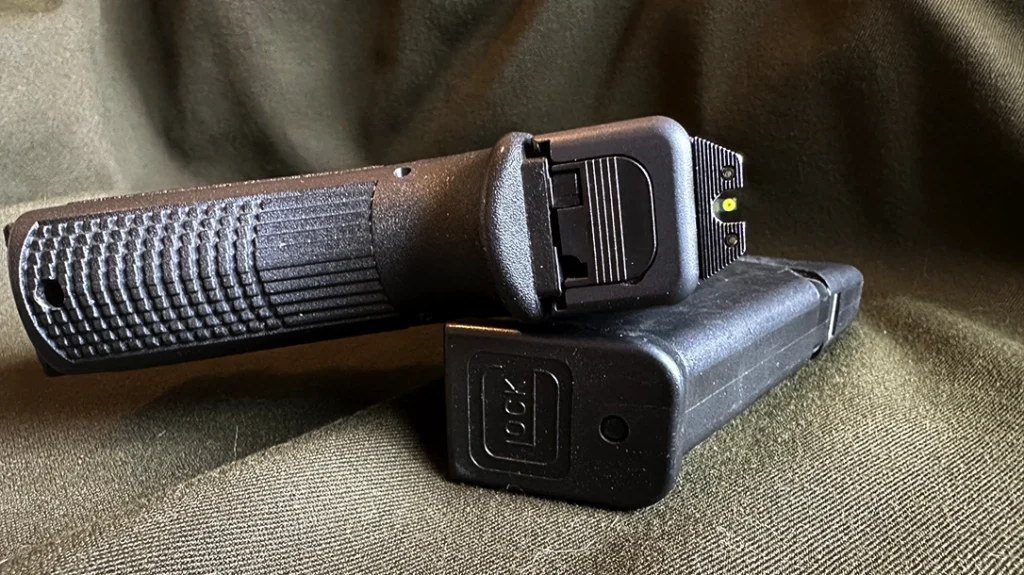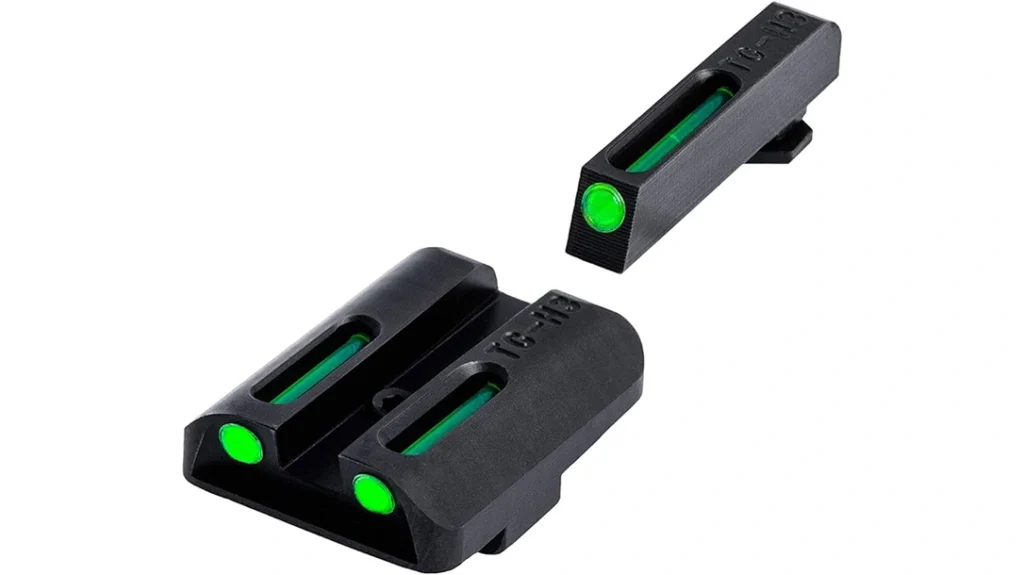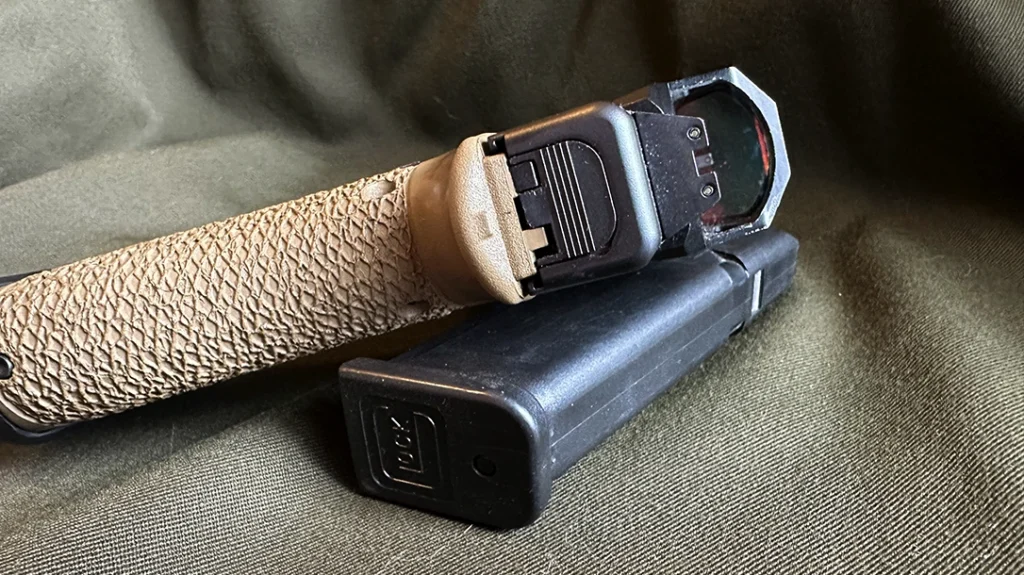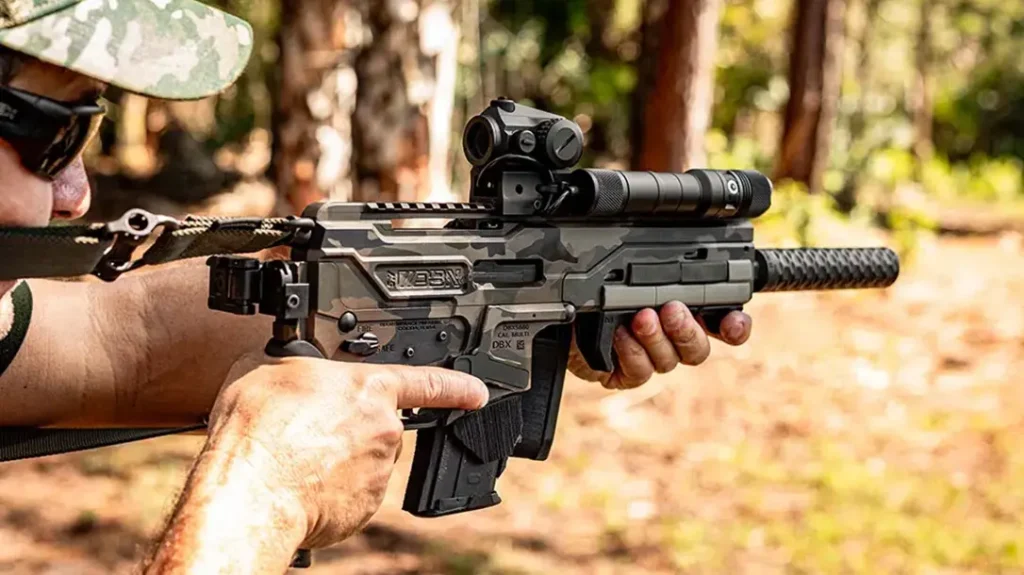Glock pistols are among the most popular handguns in the world. They are widely used by law enforcement, military, and civilian shooters alike. Famed for their simplicity, ease of maintenance, and reliability, Glock is a standard in the industry. Despite their widespread appeal, one aspect of the stock Glock that attracts consistent criticism is the sights they come with from the factory. There are a multitude of reasons why some consider aftermarket sights a necessity for their Glock. So, today, we look at a few.
Why You Should Replace Your Glock Sights with Aftermarket Options?
1. Durability
The primary complaint about Glock’s stock sights is that they are made of polymer (plastic), rather than more durable materials like steel or aluminum. The entire frame of the gun being made from polymer is seen as groundbreaking, providing durability and weight savings. However, the same cannot be said for their sights.
Many consider plastic sights to be inappropriate for heavy use. Over time, they can become worn, chipped, or damaged. This is especially true if the pistol is subjected to harsh conditions, rough handling, or even simply regular use.
Advertisement — Continue Reading Below
Dropping the firearm, repeated draw strokes, running it through training drills, or using the sights to rack the slide against a hard surface can cause noticeable wear and tear on the polymer sights.
In contrast, aftermarket sights made from steel or aluminum offer greater durability and longevity. This is especially important for shooters who depend on their firearms in high-stress or life-threatening situations.
2. Sight Picture
Another common criticism of Glock’s stock sights is the sight picture they provide. The standard sights feature a “ball-in-a-bucket” configuration: a U-shaped rear sight notch and a white dot on the front sight. While this design is simple and functional, many shooters find it suboptimal for quick target acquisition and precision shooting.
Advertisement — Continue Reading Below

It is often argued that the stock sight picture is less precise compared to other options, especially those that use contrasting colors, fiber optics, or night sight technology. For example, some shooters prefer a three-dot system (which is more commonly found on other handgun models), where both the front and rear sights have dots to be aligned on the target.
Ultimately, this aspect of Glock’s stock sights is going to come down to personal preference. However, one fact leans inescapably in favor of replacing them. The sight picture they use differs significantly from the vast majority of handgun sights. So, if you are going to regularly use more than one handgun, it makes sense to replace them to create as much commonality as possible.
3. Low-Light
One of the most significant functional drawbacks of the stock Glock sights (and many stock handgun sights across manufacturers) is their performance in low-light or no-light environments.
Advertisement — Continue Reading Below
Standard Glock sights are made of plastic with simple white markings. So, they do not glow or enhance visibility in dark conditions. If you are concerned with home defense or concealed carry, you should understand that in a life-or-death situation, quickly acquiring a clear sight picture is critical.

Night sights typically go one of three routes:
Advertisement — Continue Reading Below
- Tritium Night Sights: Tritium-filled glass vials replace the dots in these night sights. They glow actively in light or dark for years and are visible in low and even no-light conditions without needing external light sources. They are the most effective option and generally the most expensive as well.
- Fiber Optic Sights: Fiber optic sights gather and amplify ambient light. This makes them brighter and easier to see in daylight conditions. For this reason, they are particularly favored by competition shooters for their high visibility. They are not as durable or bright as tritium, but unless you are in total darkness, they will be brighter than standard sights.
- Photoluminescent Paint: These look like standard white dots in daylight, but when taken into the dark, they will glow for a brief period. They can be “charged” with exposure to the sun, interior lights, or a flashlight. However, they are generally the least effective of the three.
These options all have pros and cons. But so long as they are from a reputable company, and made from durable materials like aluminum or steel, any of them can be an improvement over stock sights.
4. Customization
One of the more appealing aspects of Glock as a brand is the vast array of aftermarket products. They allow personalization, customization, and optimization of the platform for a particular user or use case.
There are many companies, including Trijicon, AmeriGlo, Meprolight, and more, that focus on producing high-performance handgun sights. These companies offer a wide range of options, including:
Advertisement — Continue Reading Below

- Adjustable Target Sights: For shooters who prioritize precision, these sights allow for fine-tuned elevation and/or windage adjustments.
- Suppressor Height Sights: These taller sights are designed to be used with suppressors or red-dot optics. As a result, they enable the shooter to co-witness their iron sights with the optic for increased accuracy.
- Colors: Tritium and fiber optic sights can come in assorted colors, which can help distinguish between front and rear dots in the dark (orange front with green rear dots, for instance).
The sheer variety of aftermarket options makes it easy for Glock owners to find sights that better meet their specific needs, whatever they may be.
5. Cost-Cutting
Glock pistols are known for their affordability compared to other firearms of similar quality. Some believe that the switch to plastic-only sights was a way to keep costs down as Glock responded to consumer demand with more features, like rail mounts and optic cuts.
Advertisement — Continue Reading Below
Glock used to offer the option of stock night-sights, but no more. For many, this decision is understandable but still disappointing. Especially considering Glock’s competitors usually include metal sights or night sights as standard features.
This perception contributes to the widespread belief that stock Glock sights are “placeholders,” or even “dovetail protectors” that most serious shooters will replace at the first opportunity.
The consensus in the shooting community seems to be that while Glock pistols are excellent products overall, the stock sights fail to reflect the same ambitious standards found in the rest of the platform.
Advertisement — Continue Reading Below

























